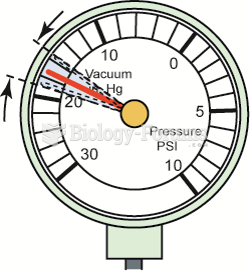|
|
|
Hippocrates noted that blood separates into four differently colored liquids when removed from the body and examined: a pure red liquid mixed with white liquid material with a yellow-colored froth at the top and a black substance that settles underneath; he named these the four humors (for blood, phlegm, yellow bile, and black bile).
More than 30% of American adults, and about 12% of children utilize health care approaches that were developed outside of conventional medicine.
In ancient Rome, many of the richer people in the population had lead-induced gout. The reason for this is unclear. Lead poisoning has also been linked to madness.
The immune system needs 9.5 hours of sleep in total darkness to recharge completely.
The liver is the only organ that has the ability to regenerate itself after certain types of damage. As much as 25% of the liver can be removed, and it will still regenerate back to its original shape and size. However, the liver cannot regenerate after severe damage caused by alcohol.
 (A) Bronchopneumonia with localized pattern. (B) Lobar pneumonia with a diffuse pattern within the l
(A) Bronchopneumonia with localized pattern. (B) Lobar pneumonia with a diffuse pattern within the l
 A rapidly vibrating needle at idle that becomes steady as engine speed is increased indicates worn ...
A rapidly vibrating needle at idle that becomes steady as engine speed is increased indicates worn ...





